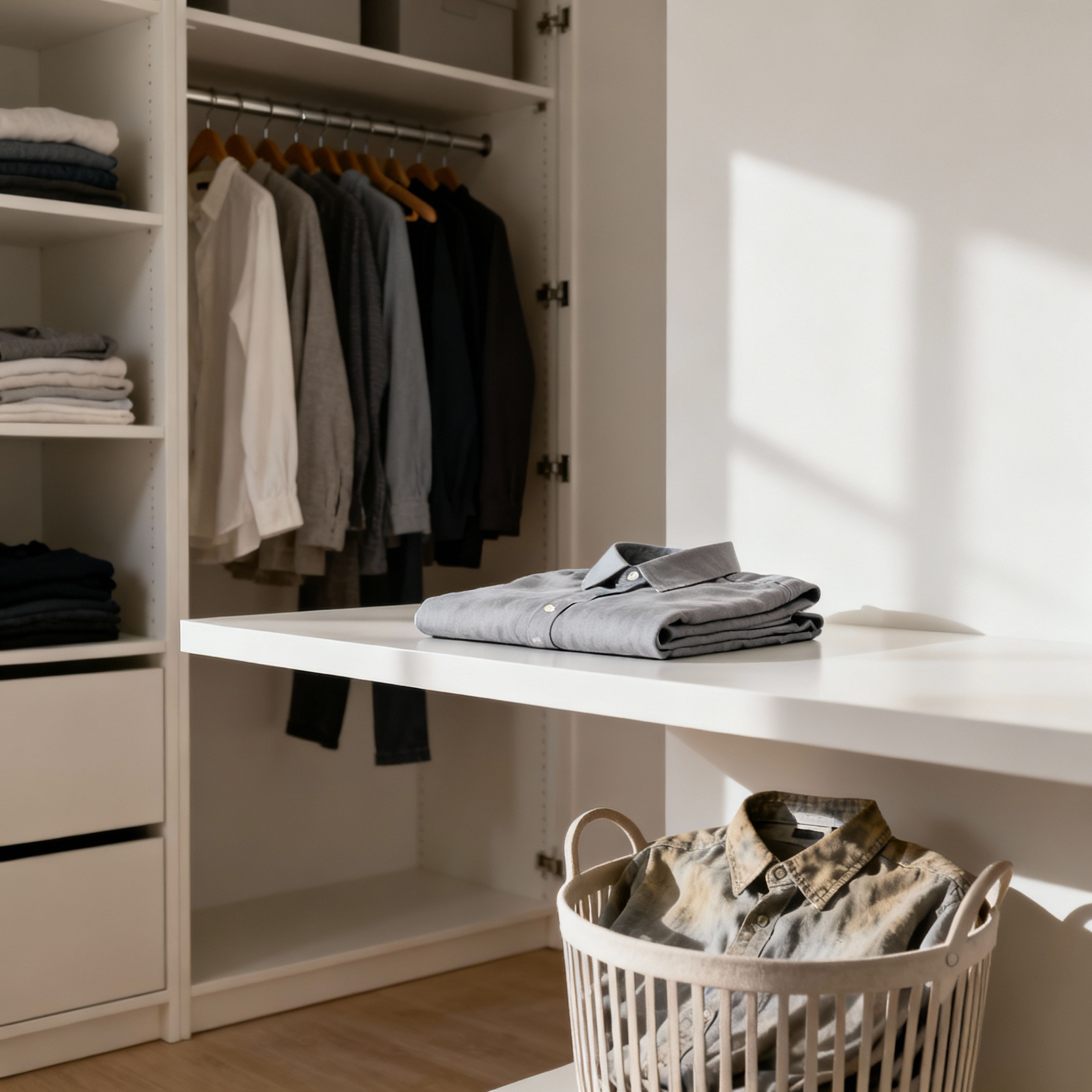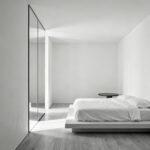Most successful home design professionals spend less than 20% of their time on the final act of decorating. After analyzing project workflows from my 15 years in the industry, I discovered the framework that underpins every truly functional, serene space. It’s not about finding the perfect bin or having a bigger closet—it’s about implementing a systematic design strategy that anticipates use and eliminates friction. These 20 transformative bedroom organization ideas teach you to think with the precision of a designer, building a system where order isn’t a task, but an outcome.
We’ll move methodically through this process. We’ll start with Foundational Principles—high-impact actions that create immediate clarity. From there, we’ll move into Elevating Systems & Workflow, focusing on the mechanics of daily life. Next, we’ll explore Advanced Spatial Strategies that reshape how you perceive your room’s potential. We’ll finish by Mastering Long-Term Order, integrating habits and technology to make organization effortless and enduring.
Foundational Principles
Every well-designed structure begins with a solid foundation. These initial steps are the load-bearing walls of your organizational system. They aren’t just about cleaning up; they’re about establishing the core principles of access, inventory, and spatial awareness that every subsequent strategy will build upon.
1. Execute a Focused Nightstand Surface Declutter
Before you tear apart your closet, start here. The nightstand is the first and last surface you interact with daily, and its state dictates the psychological tone of your room. An accessible entry point is a radical clear-out. Remove everything that isn’t essential to your immediate pre-sleep or post-wake routine: a lamp, your current book, a glass of water, and perhaps a charger. Anything else—old magazines, stray papers, forgotten mugs—is visual noise that contributes to a low-level, constant sense of disarray. This simple act provides a disproportionately large psychological return, creating an instant island of calm.
From my photographer’s eye, the nightstand is a vignette that tells the whole story of a room. If it’s chaotic, the entire space feels unresolved. The next step is to compose this small surface with intention. Don’t just place items; arrange them. Use a small, beautiful tray to contain loose objects like lip balm or a watch. Coil your charging cable neatly or, better yet, switch to a wireless charging dock to eliminate the wire entirely. Think about scale and material—how the lamp base relates to the coaster, how the book cover complements the tray. This isn’t just cleaning; it’s designing your immediate environment for tranquility.
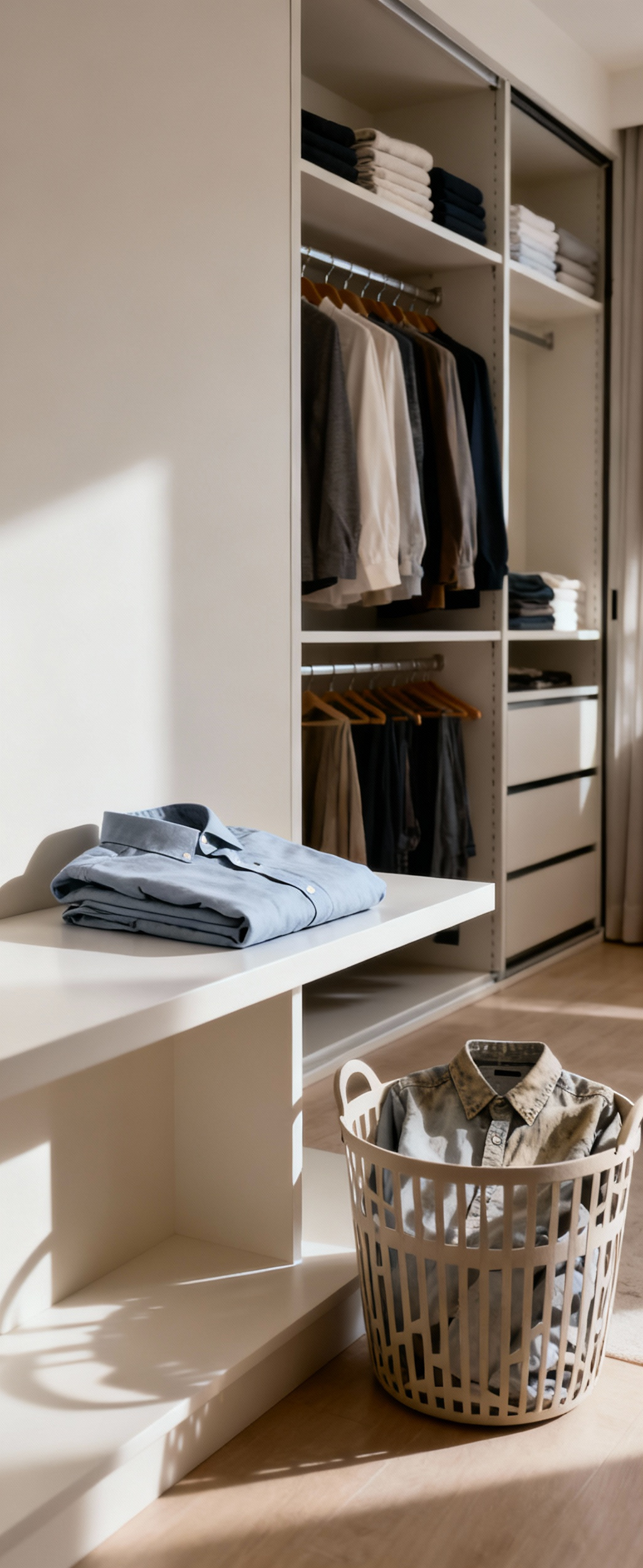
2. Implement a ‘One-In, One-Out’ Policy
With your nightstand clear, apply that principle of balance to your largest source of clutter: the wardrobe. The most effective way to prevent closet overflow is to adopt a simple ‘one-in, one-out’ rule. For every new garment you bring into your home, one existing item must leave. This non-negotiable policy transforms you from a passive accumulator into an active curator of your own collection. It forces a constant, low-effort evaluation of what you own, keeping your inventory in check without requiring massive, exhausting purges.
I’ve seen this play out when clients master this policy: it fundamentally changes their purchasing habits. What I tell professionals and homeowners alike is to take it a step further. Before you even buy the new item, identify what it will replace. Standing in the store, ask yourself, “Which shirt is this one better than?” If you can’t immediately name one, you probably don’t need it. This mindset prevents impulsive buys and ensures every new piece is a deliberate upgrade to your wardrobe’s overall function and quality. It’s a systemic solution, not just a rule.
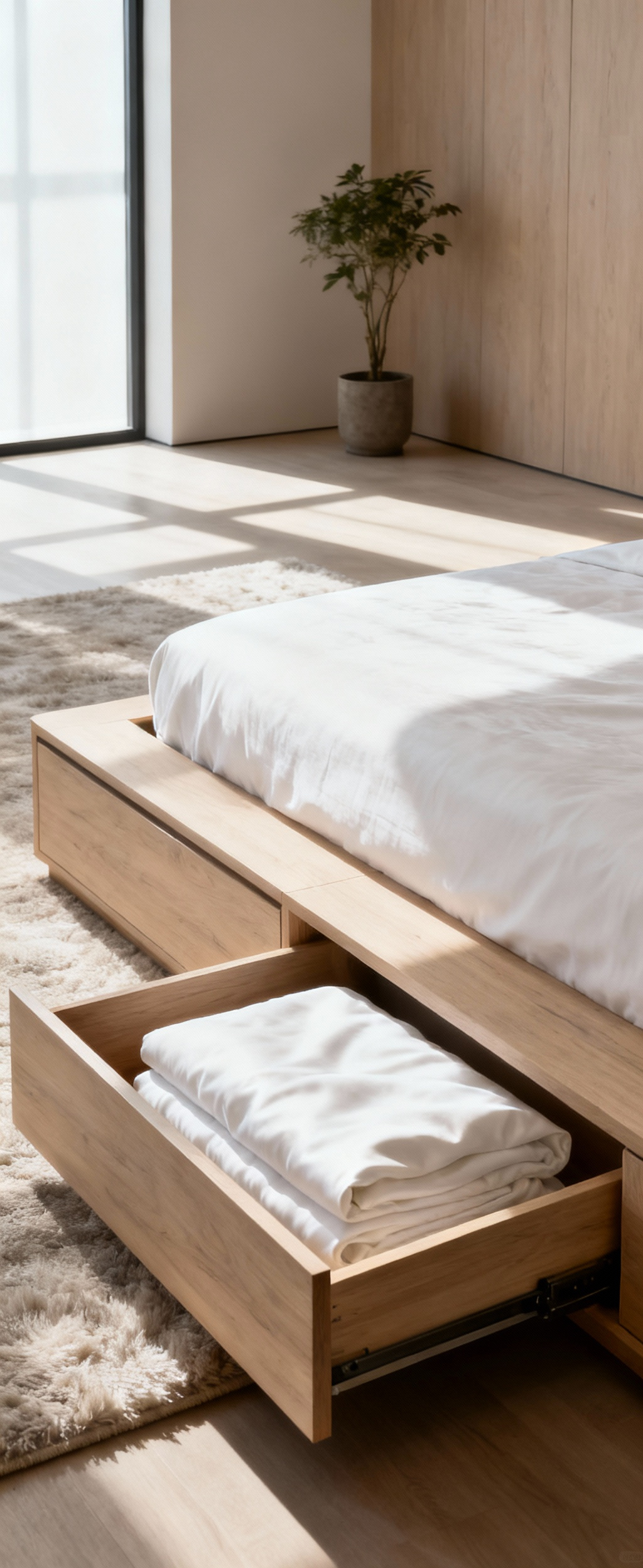
3. Categorize Drawer Contents with Modular Dividers
The next frontier is inside your drawers—often hidden zones of chaos. Simply throwing items into a drawer is a recipe for disorder. The solution is architectural: partition the space. Modular dividers are the single most effective tool for this. Start with your sock or underwear drawer. Use simple dividers to create designated zones for athletic socks, dress socks, and so on. This immediately provides visual clarity, cuts down on search time, and makes getting ready less of a scramble.
Here’s what’s interesting: the goal isn’t just separation, it’s creating an intuitive retrieval system. Use clear acrylic dividers for smaller items like jewelry or ties so you can see everything at a glance. For clothes, adjustable bamboo or fabric-lined dividers can be configured to perfectly fit stacks of t-shirts or rolled-up sweaters. Years of design taught me that good organization minimizes decision fatigue. By pre-sorting your items into logical, visible categories within the drawer, your brain does less work every morning. It’s about designing a system that works for you.
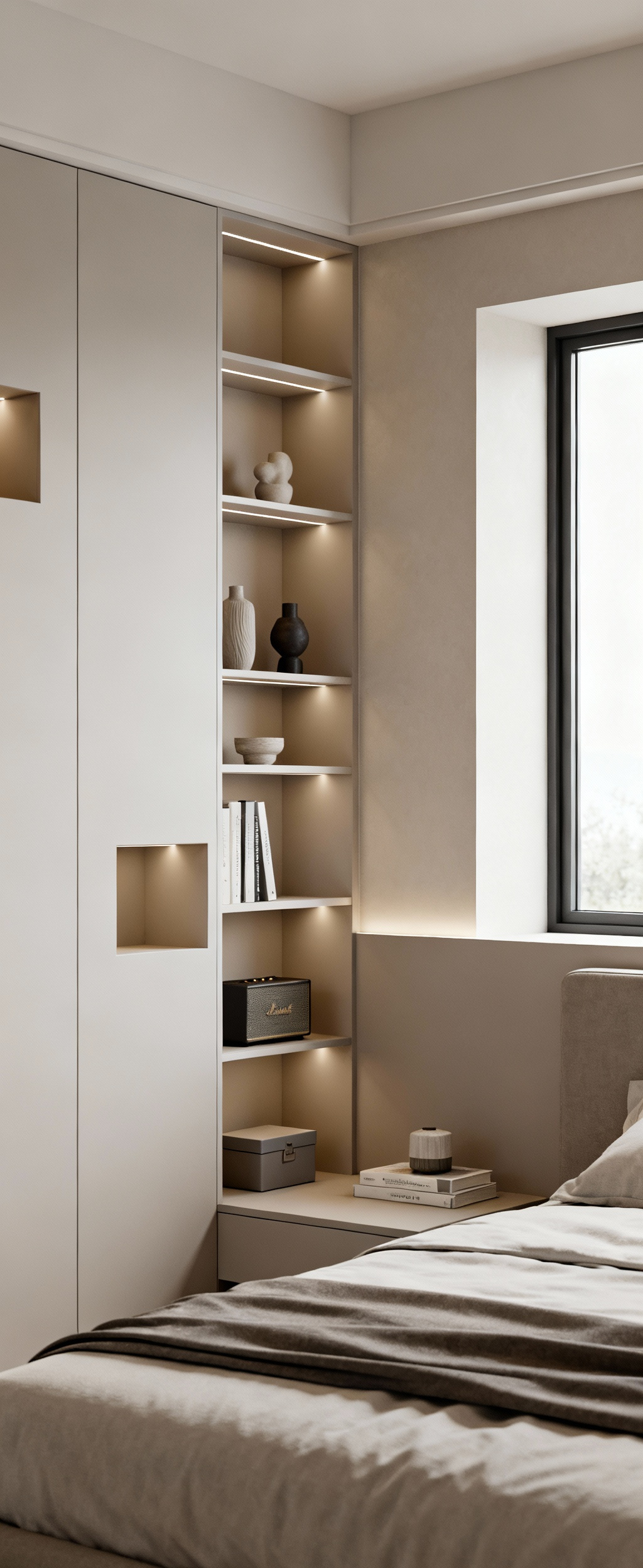 Vertical storage solutions.” class=”wp-image-12714″/>
Vertical storage solutions.” class=”wp-image-12714″/>4. Leverage Integrated Under-Bed Storage Systems
Now we look for untapped potential. The void under your bed is one of the most underutilized real estate opportunities in any bedroom. Don’t just shove loose boxes there. At a minimum, use sealed, wheeled containers to store off-season clothing or extra bedding. This protects your items from dust and makes access painless. Group like with like—all winter sweaters in one, all spare linens in another—and label them clearly. This act alone reclaims a significant amount of space from pure chaos.
In my experience with design documentation, the cleanest room compositions are those with an uninterrupted floor plane. For a truly elevated solution, invest in a bed frame with built-in drawers or a hydraulic lift mechanism. This transforms the entire under-bed area into a fully integrated, dust-free dresser. It’s a game-changer, especially in smaller rooms, because it adds substantial storage without consuming any additional floor space. The visual effect is profound; by lifting everything off the floor and into a concealed system, the room feels larger, calmer, and more architecturally sound.
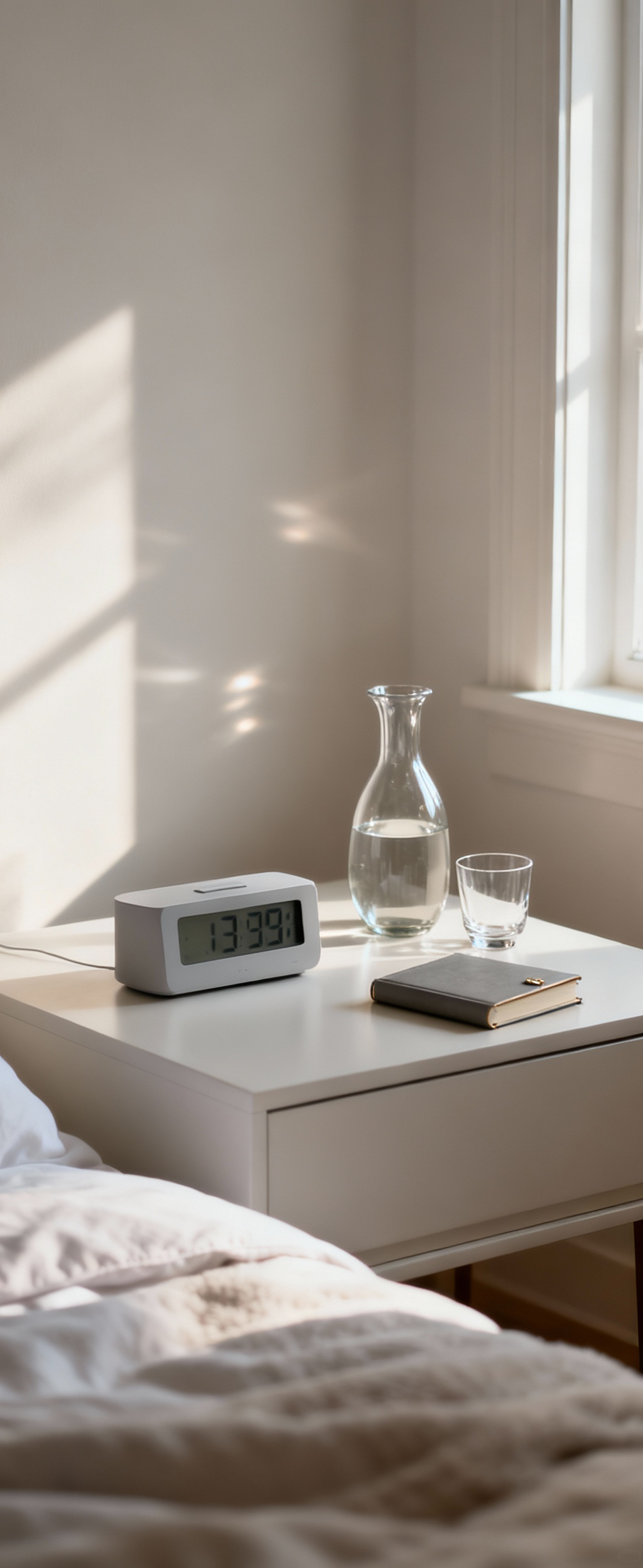
5. Utilize Vertical Wall Space
Once the floor is clear, the next logical move is to look up. Your walls are not just for art; they are vertical storage planes waiting to be activated. The most common mistake is thinking only in terms of floor-based furniture. Instead, install a series of high-quality floating shelves or a modular wall-mounted shelving system. Use them to get books, small plants, and curated decorative objects off your dresser and desk, immediately freeing up those valuable horizontal surfaces.
I learned this when shooting compact city apartments: drawing the eye upward creates an illusion of height and space. Go beyond a single shelf. Consider installing a full-wall system around the headboard to replace bulky nightstands, or run shelving high along the room’s perimeter to store items you don’t need to access daily. The key is to see your walls as a core component of your storage infrastructure. When you integrate storage vertically, you distribute the organizational load across the entire volume of the room, not just the floor.
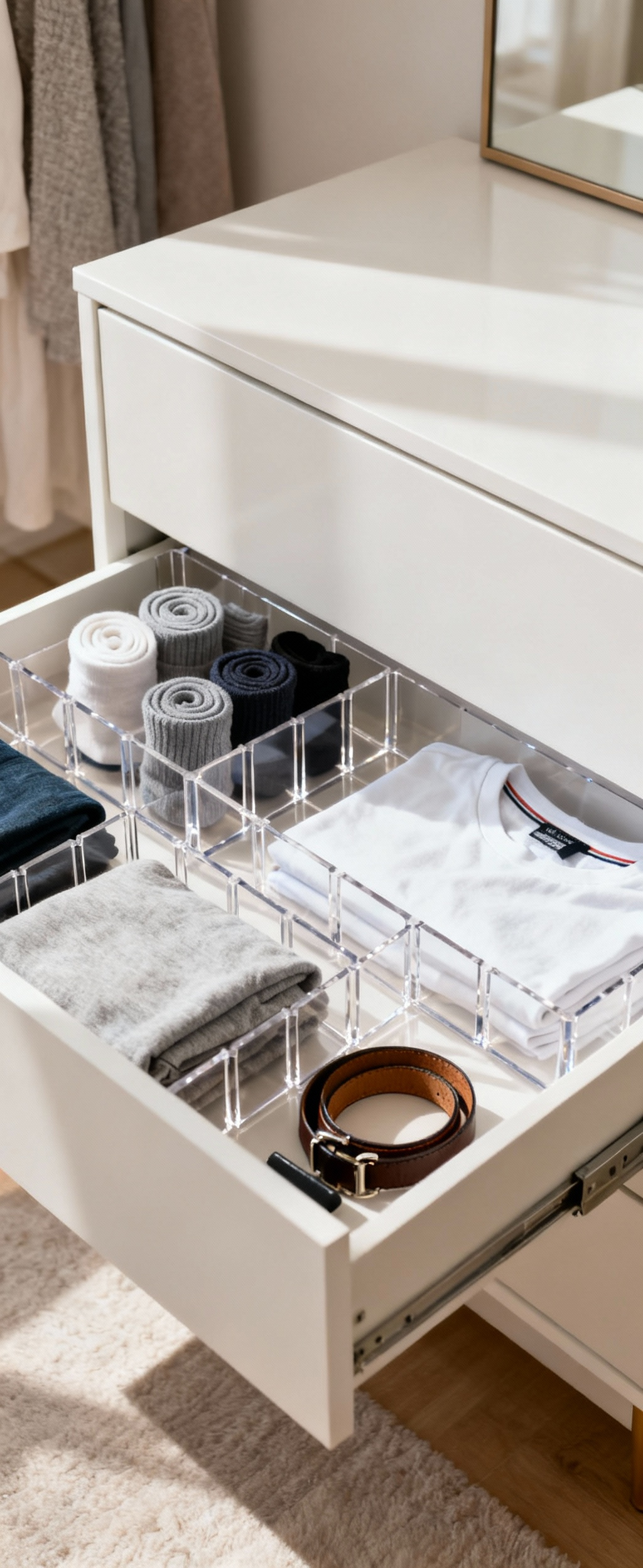
Elevating Systems & Workflow
With foundational order established, we now refine the systems you use every day. This is about more than just where things are stored; it’s about the efficiency of how you interact with them. We will design workflows for dressing, laundry, and daily routines that reduce friction and make maintaining order feel automatic.
6. Strategically Zone Your Wardrobe
Treat your wardrobe not as a single entity, but as a series of Functional Zones. At the most basic level, this means grouping like with like: all trousers together, all shirts together. But a more sophisticated approach maps the closet to your life. Create distinct zones for work attire, casual wear, activewear, and formal garments. This simple act of categorizing makes locating specific items exponentially faster and less stressful.
What I tell my design clients is to think of it like laying out a professional kitchen. The French call it mise en place—everything in its place. The next level of zoning is based on frequency of use. Items you wear multiple times a week should be at eye-level and within easy reach. The suit you wear twice a year? It can go on a higher rack. This creates a functional hierarchy that aligns your closet’s layout with your actual daily behavior. It’s a pragmatic system designed around motion, not just appearance.
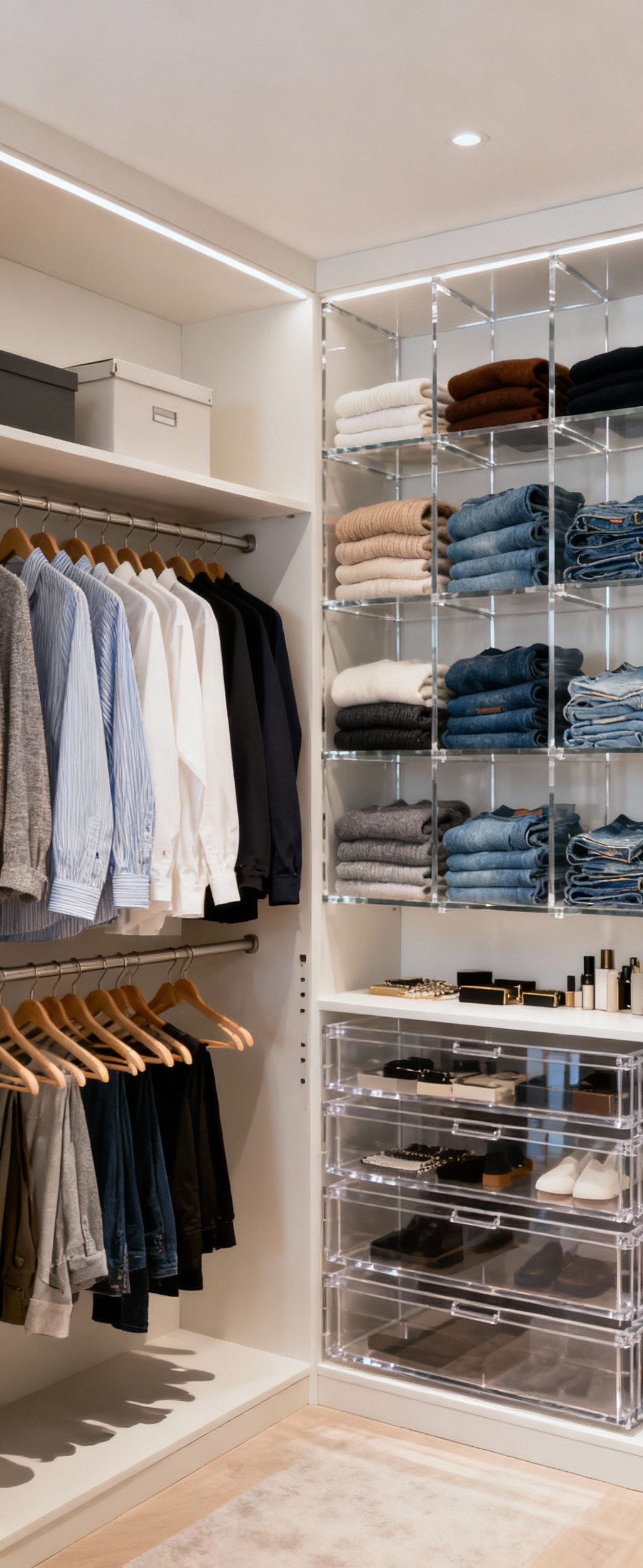
7. Optimize Closet Interiors with Tailored Configurations
A standard closet—one rod, one shelf—is an incredibly inefficient design. To truly optimize it, you must think like a custom cabinet maker. The most impactful change is often adding a second hanging rod to instantly double your capacity for shirts, jackets, and pants. Then, look at the wasted space below. Introduce a modular drawer unit or tiered shelving for folded items and shoes. You’re essentially building a custom dresser inside your closet.
From my professional experience, a one-size-fits-all solution never works as well as a tailored one. Analyze your specific wardrobe. Do you have more dresses than shirts? Adjust your rod height accordingly. Do you own 30 pairs of shoes? A dedicated shoe rack is a non-negotiable investment. Use slim velvet hangers to reclaim up to 30% of your hanging space and create a clean, uniform look. This isn’t just organizing; it’s engineering your closet to perfectly match its contents.
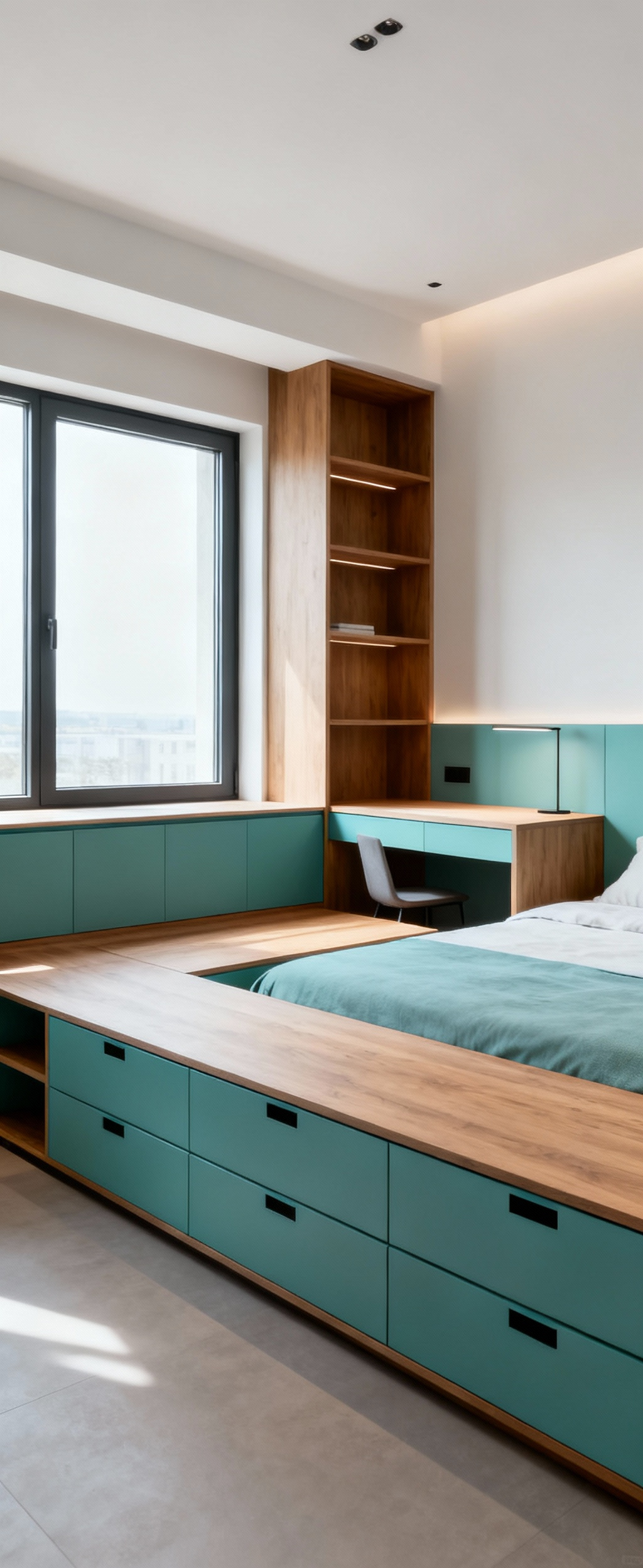
8. Apply the ‘First-In, First-Out’ Principle to Wardrobe Rotation
This is a logistics principle used in warehouses that is brilliant when applied to a seasonal wardrobe. The “First-In, First-Out” (FIFO) method ensures that older, stored items get cycled back into use before newly acquired ones. When you pack away your winter clothes, put them in a sealed container. When winter rolls around again, you must unpack and integrate that container before adding anything new. This simple discipline prevents you from perpetually wearing only your newest clothes while older-but-still-good items languish in storage.
It’s a fantastic system for forcing a periodic review. When you bring last season’s items back out, you’re compelled to assess each one. Did you miss it? Does it still fit? Is it still your style? It creates a natural, low-stress opportunity to purge items that are no longer serving you. It’s an active inventory management system, turning the seasonal swap from a chore into a strategic curation opportunity.
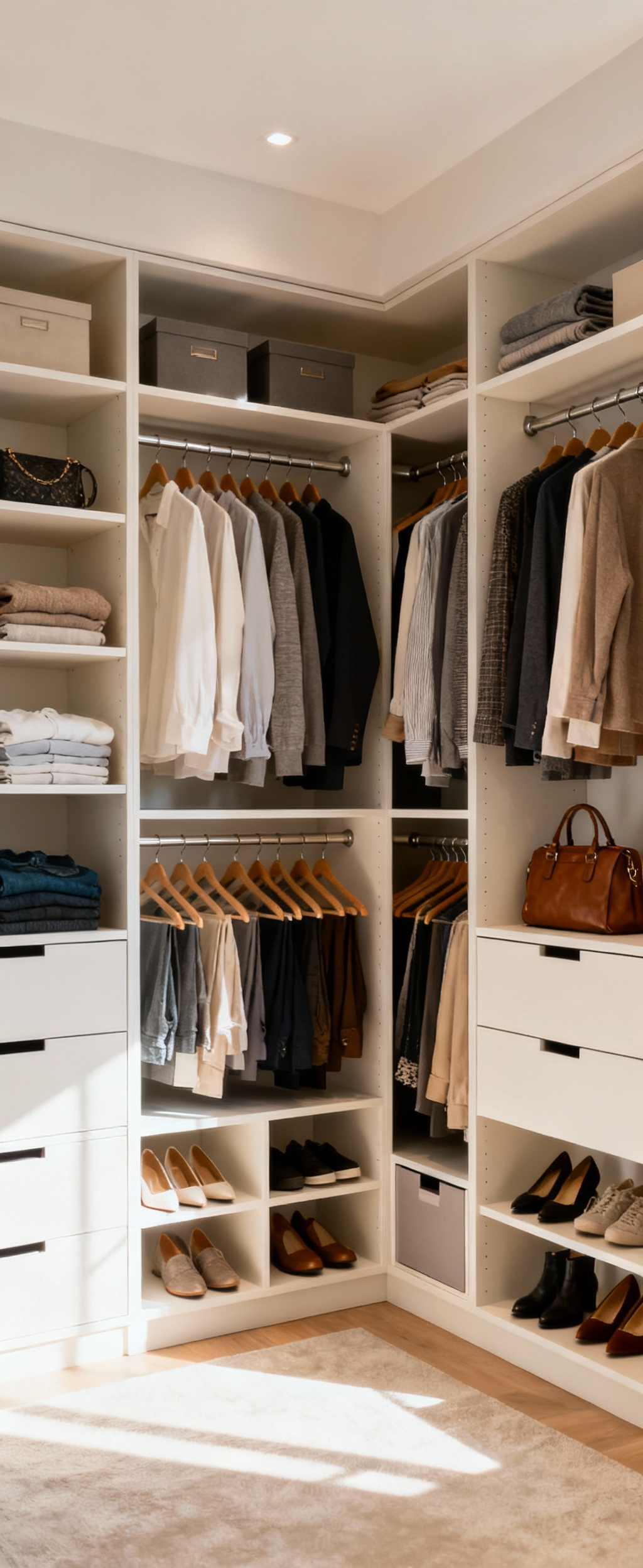
9. Designate a Dedicated ‘Launchpad’ Zone
Clutter often forms at entry and exit points. The key is to design for it. Create a dedicated “launchpad”—a single, contained area near your bedroom door for the items you grab on your way out: keys, wallet, sunglasses, phone. This could be a small bowl on a dresser, a narrow wall-mounted shelf with hooks, or a valet stand. By giving these daily-carry items a specific home, you stop them from scattering across every available surface.
Here’s what gets me: a launchpad isn’t a drop zone; it’s a staging area. It should be just large enough for the essentials and no larger. The design itself provides the limit. This prevents it from becoming a new pile of clutter. It’s a functional design pattern that intercepts chaos at the source, streamlining your morning exit and your evening return. Think of it as a crucial piece of infrastructure for a smooth day.
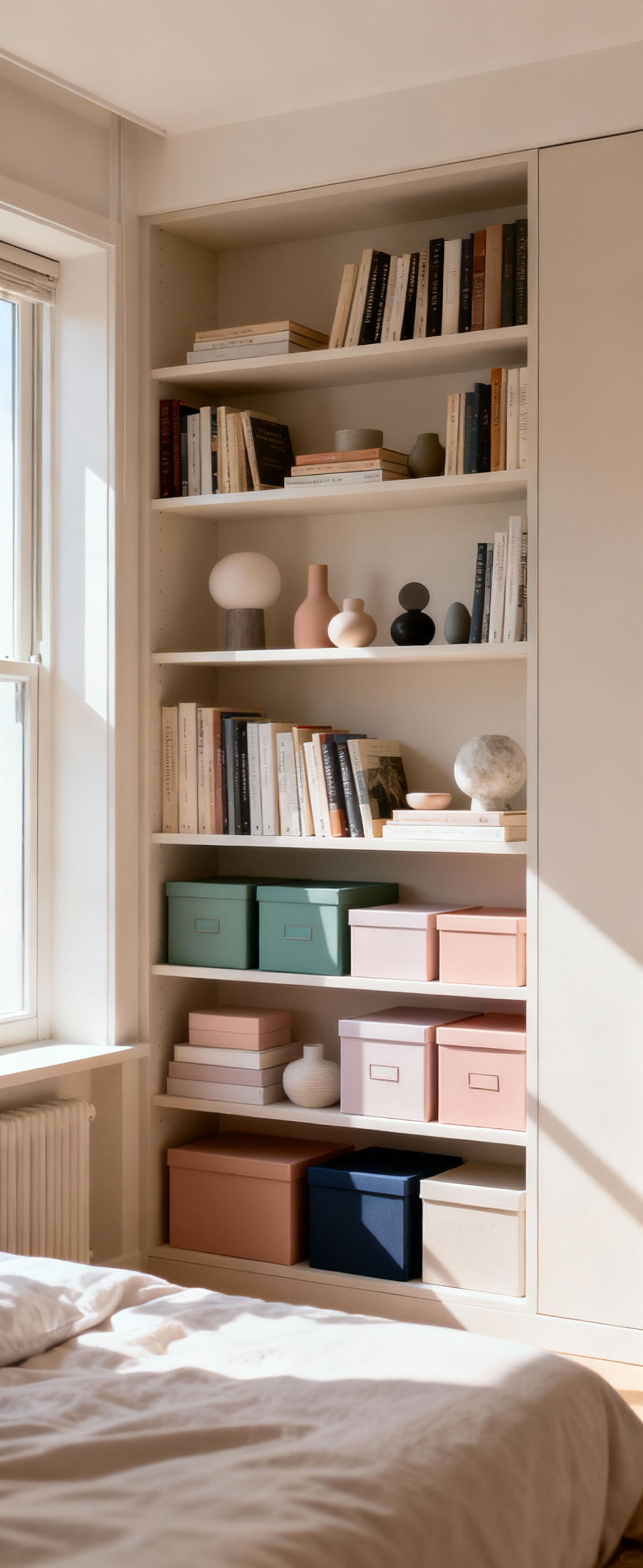
10. Engineer a Seamless Workflow for Laundry
The “laundry chair”—that pile of clean clothes waiting to be put away—is a failure of system design. To fix it, you need to engineer a frictionless workflow. First, place your hamper where you get undressed, not in the bathroom or laundry room. Make it as easy as possible to put dirty clothes where they belong. A multi-bin sorter can even let you pre-sort lights, darks, and delicates, saving a step later.
The critical stage, and the one most people skip, is the final step. Make “immediate put-away” a non-negotiable part of the process. I’ve seen this work best when you integrate it into another habit. For example, fold your laundry while listening to a podcast or watching a show. Then, the moment it’s over, the laundry gets put away—no exceptions. By removing the lag time where piles form, you close the loop and solve the problem for good.
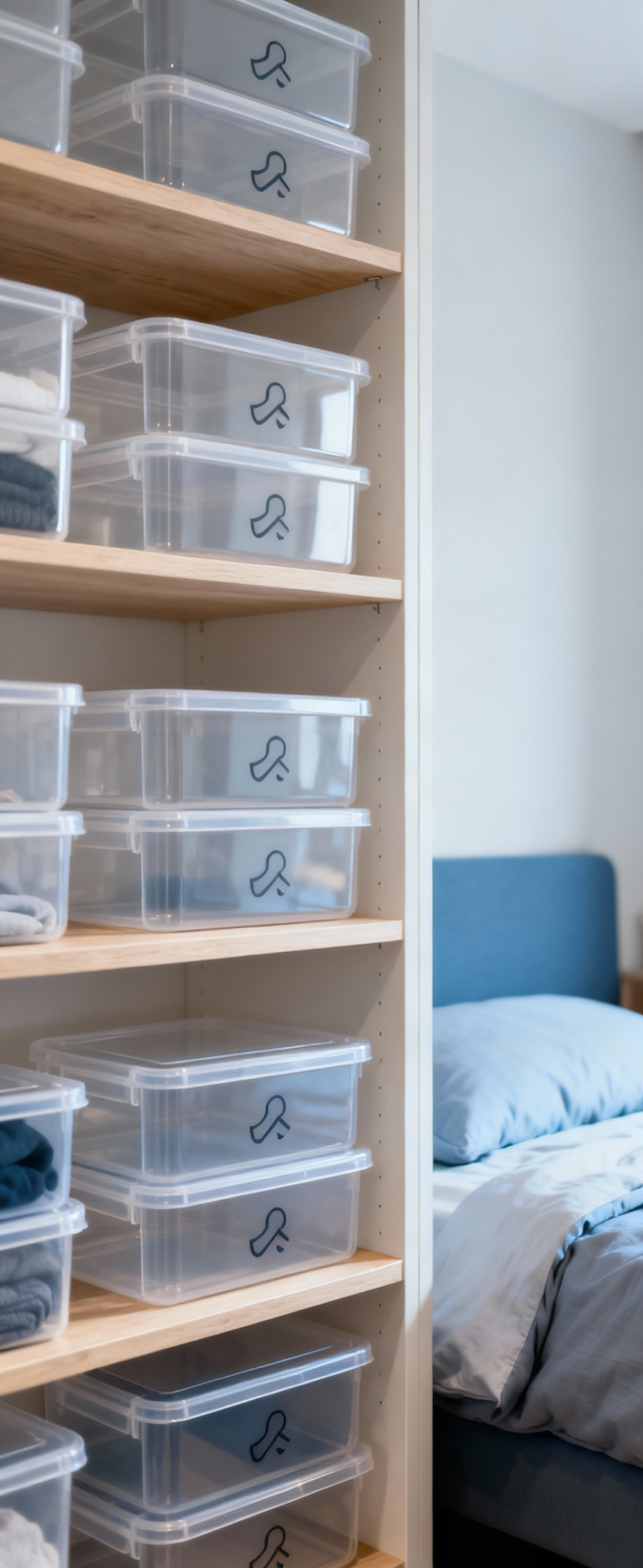
11. Employ Thematic or Color-Coded Grouping
Once items are zoned, the final layer of refinement is visual organization. This serves both a practical and an aesthetic purpose. Start by arranging clothes within their zones by color, from light to dark. This not only looks incredibly satisfying and calming but also makes it far easier to find that specific blue shirt you’re looking for. The visual order reduces the mental energy required to get dressed.
As a photographer, I’m obsessed with how color composition affects mood. A closet organized by color feels intentional, calm, and curated. But you can also group by theme. A “travel” cubby can hold your passport holder, neck pillow, and travel-size toiletries. A “workout” drawer can contain your gym clothes, heart rate monitor, and earbuds. This thematic grouping prepares you for specific activities, again reducing friction and making it easier to get out the door.
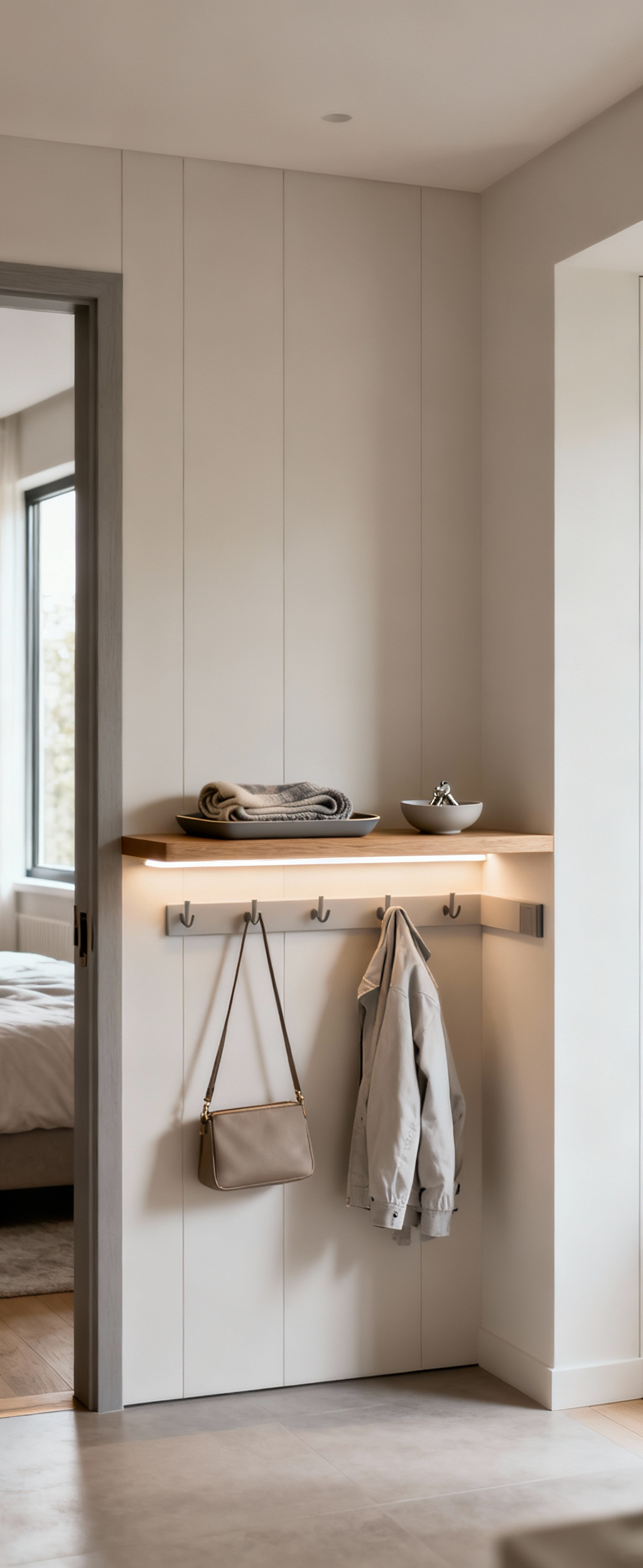
Advanced Spatial Strategies
Now we move from managing items to manipulating space itself. These strategies require a designer’s mindset—seeing the room not just as it is, but as it could be. We’ll perform audits, select intelligent furniture, and rethink the very layout and purpose of different areas to achieve holistic harmony.
12. Conduct a Comprehensive Space Audit
Before you buy a single new piece of furniture, perform a thorough audit of your room. This is a professional diagnostic process. With a notepad or tablet, sketch a rough floor plan. Now, observe and document. Where does clutter consistently accumulate? That’s a sign of a system failure. Which areas are underused? The corner behind the door? The wall above the dresser? Measure these spaces. You can’t design a solution if you don’t first precisely define the problem and the opportunity.
I do this on every project. It’s about gathering data. Note the flow of traffic. Do you have to squeeze past the foot of the bed? Maybe the layout is wrong. Pay attention to light. Is a bulky piece of furniture blocking a window? Your audit should generate a concrete list of problems to solve and opportunities to exploit. This analytical approach ensures your next steps are strategic, not speculative.
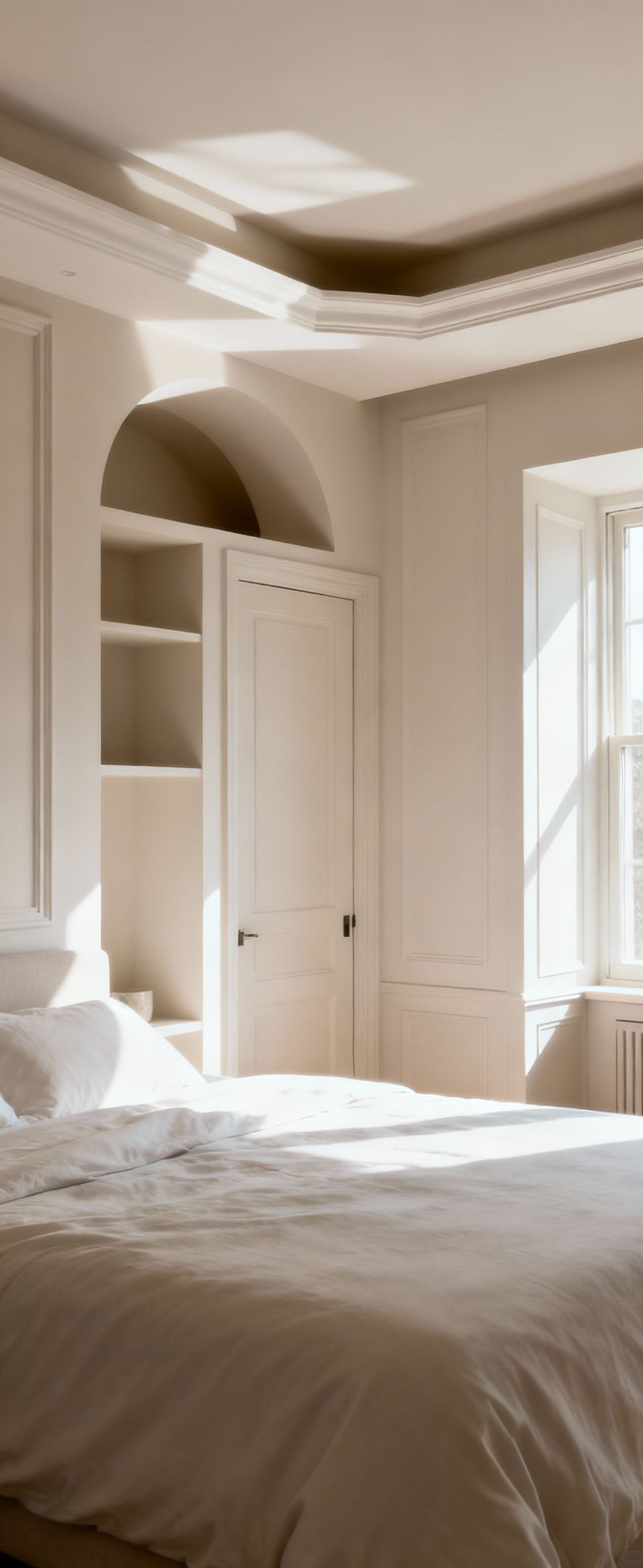
13. Integrate Multi-Purpose Furniture Pieces
In any space, but especially smaller ones, every piece of furniture should be working hard. Seek out and deploy multi-purpose pieces that offer more than one function. A storage ottoman at the foot of the bed provides seating and a place to store extra blankets. A headboard with integrated shelving can eliminate the need for nightstands. A lift-top coffee table can double as a small workspace.
This is a core principle of efficient design: functional density. I’m not a fan of gimmicky furniture, but I’m a huge proponent of pieces that intelligently combine functions. A high-quality platform bed with deep, integrated storage drawers beneath is far superior to a separate bed frame and dresser. It occupies the same footprint but doubles the utility. By choosing furniture that performs multiple roles, you maximize the utility of every square foot.
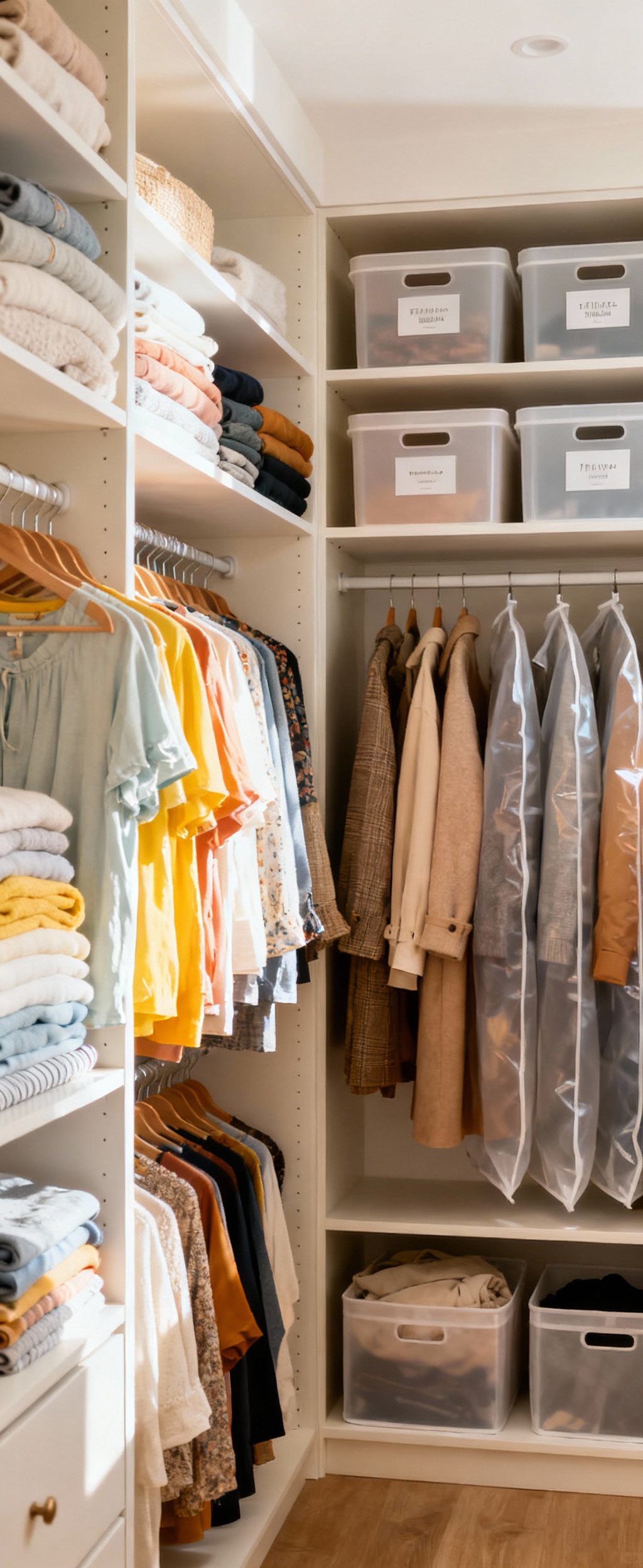
14. Envision and Implement a Bedroom Zone Transformation
Your bedroom likely serves more purposes than just sleeping. It might be a dressing room, a reading nook, a place to watch movies, or even a part-time office. Instead of letting these functions blur together chaotically, formally define them with zones. Use furniture placement, lighting, and rugs to create distinct areas with distinct purposes. An armchair and a floor lamp in a corner create a dedicated “reading zone.” Placing your dresser and a full-length mirror along one wall defines a “dressing zone.”
This is a powerful concept I learned from architectural planning. Zoning creates psychological boundaries. When you are in the “reading zone,” you are less likely to be distracted by the clothes that need to be put away in the “dressing zone.” This purposeful division helps maintain order by ensuring that activities (and their related items) don’t spill over into the entire room. It makes the space feel larger and more intentional.
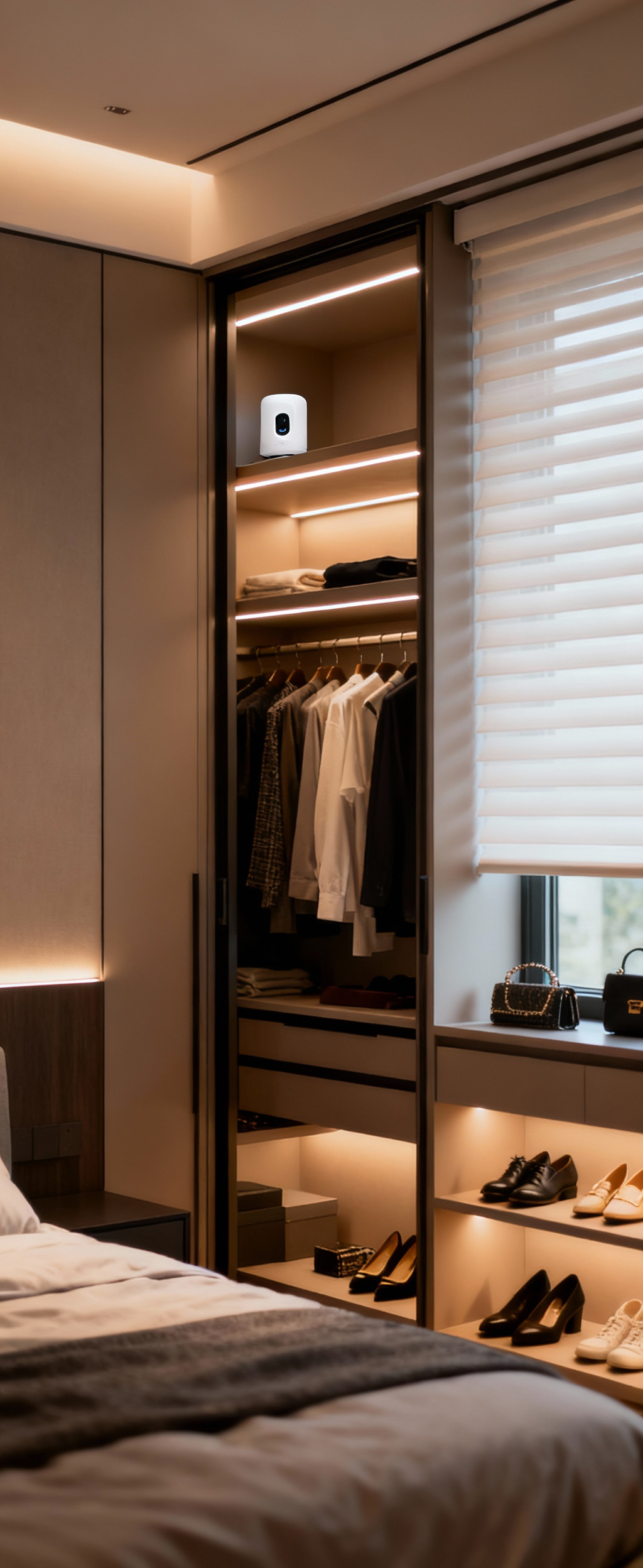
15. Integrate Biophilic Design Principles
Biophilic design—the practice of connecting architecture and design with nature—has a profound and often overlooked impact on organization. At its simplest, this means adding a few well-chosen, low-maintenance plants to your room. They purify the air, and their presence has been shown to reduce stress, making you more likely to feel calm and maintain an orderly environment. A cluttered space feels even more chaotic next to the simple, organic order of a living plant.
To be fair, this goes deeper than just houseplants. It’s about materials and light. Prioritize furniture made from natural wood. Use linen or cotton bedding. Maximize natural light by keeping window coverings minimal. I’ve noticed in my work that spaces rich in natural textures and light feel inherently calmer and less cluttered, even with the same amount of stuff. A connection to nature fosters a psychological desire for order and tranquility.
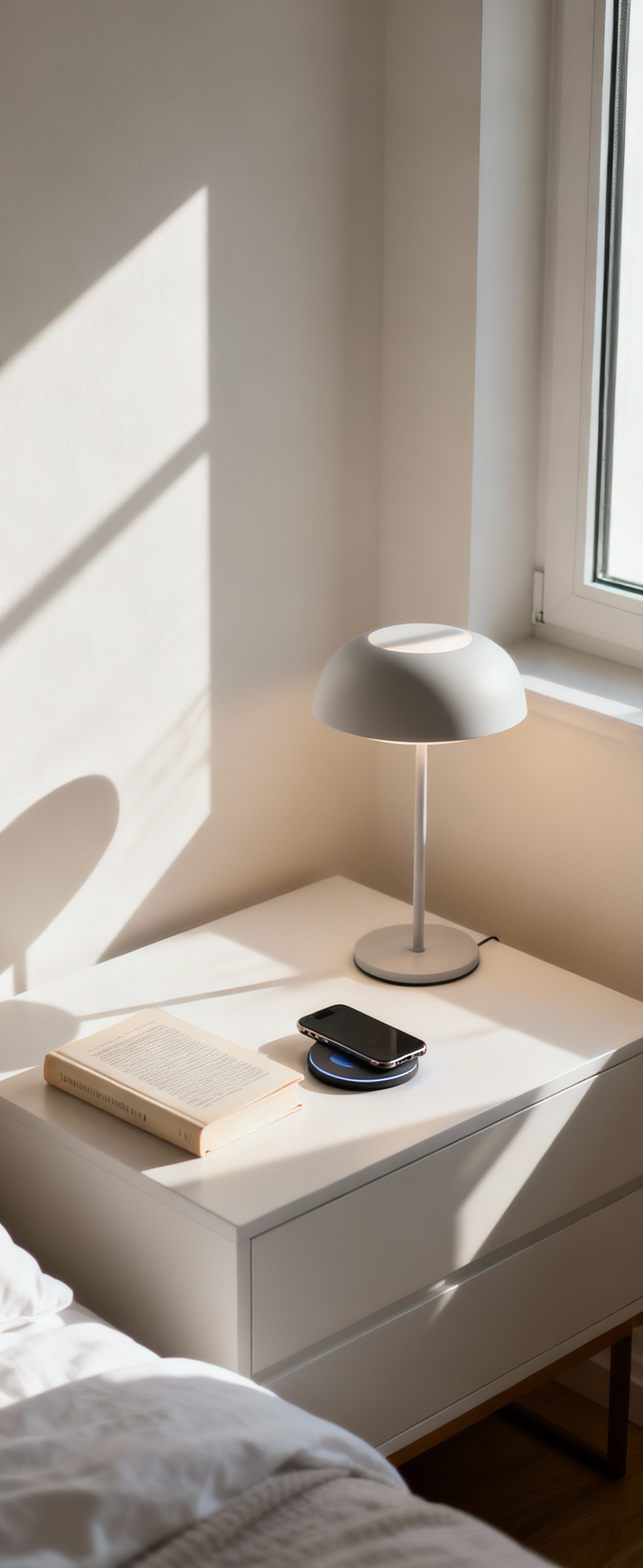
16. Master Discreet Cable Management
Nothing destroys the visual serenity of a well-organized room faster than a tangled mess of cables. This electronic spaghetti is the ultimate form of visual clutter. Tackling it is not just tidying; it’s a technical refinement that signals true mastery. Start by bundling loose wires with velcro ties or fabric cable sleeves. Then, use adhesive clips to run them discreetly along the back of furniture or against baseboards.
For a truly professional finish, the goal is to make cables disappear. Mount a power strip to the underside of your nightstand or desk to get the entire apparatus off the floor. Choose furniture designed with built-in cable management channels. In my architectural photography, the first thing we do is hide every visible wire, because we know they immediately signal chaos and detract from the design intent. A room free of cable clutter feels finished, peaceful, and profoundly organized.
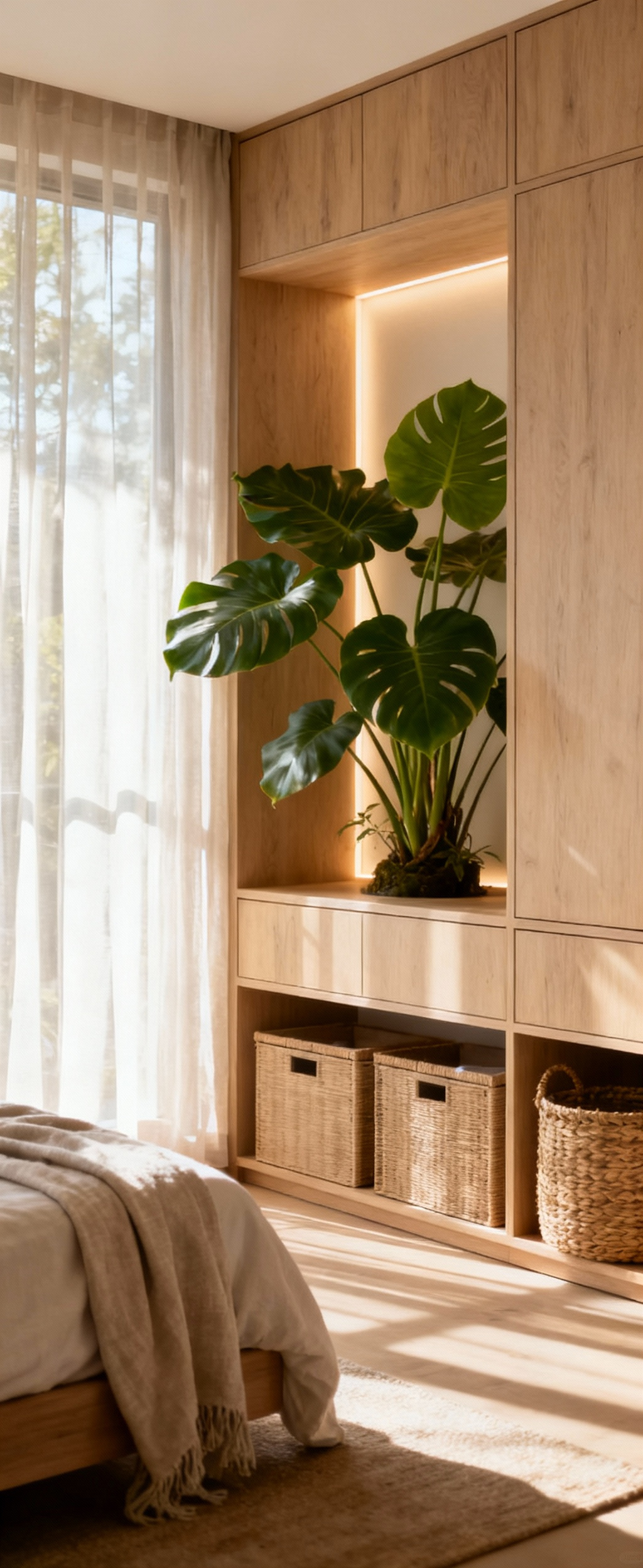
Mastering Long-Term Order
The final stage is about making organization a sustainable, integrated part of your life. These are the expert-level systems and mindsets that ensure the order you’ve created becomes permanent. This involves leveraging technology, automating maintenance, and fundamentally shifting your relationship with your belongings.
17. Harness Digital Inventorying
For items in deep storage—like seasonal clothing, formal wear, or sentimental collections—a digital inventory is a powerful professional tool. Use a simple spreadsheet or a dedicated app to photograph and log each item before you store it away. Note what it is and in which numbered bin or box it resides. This might sound extreme, but it solves a common problem: buying duplicates of things you already own but forgot about.
This isn’t about cataloging every pair of socks. It’s a strategic tool for managing your less-visible assets. I learned this when documenting large art collections for clients. Knowing exactly what you have and where it is prevents unnecessary accumulation and makes retrieval effortless. Need your heavy winter coat? A quick search of your inventory tells you it’s in Bin #4 in the top of the closet, saving you a frustrating, messy search.
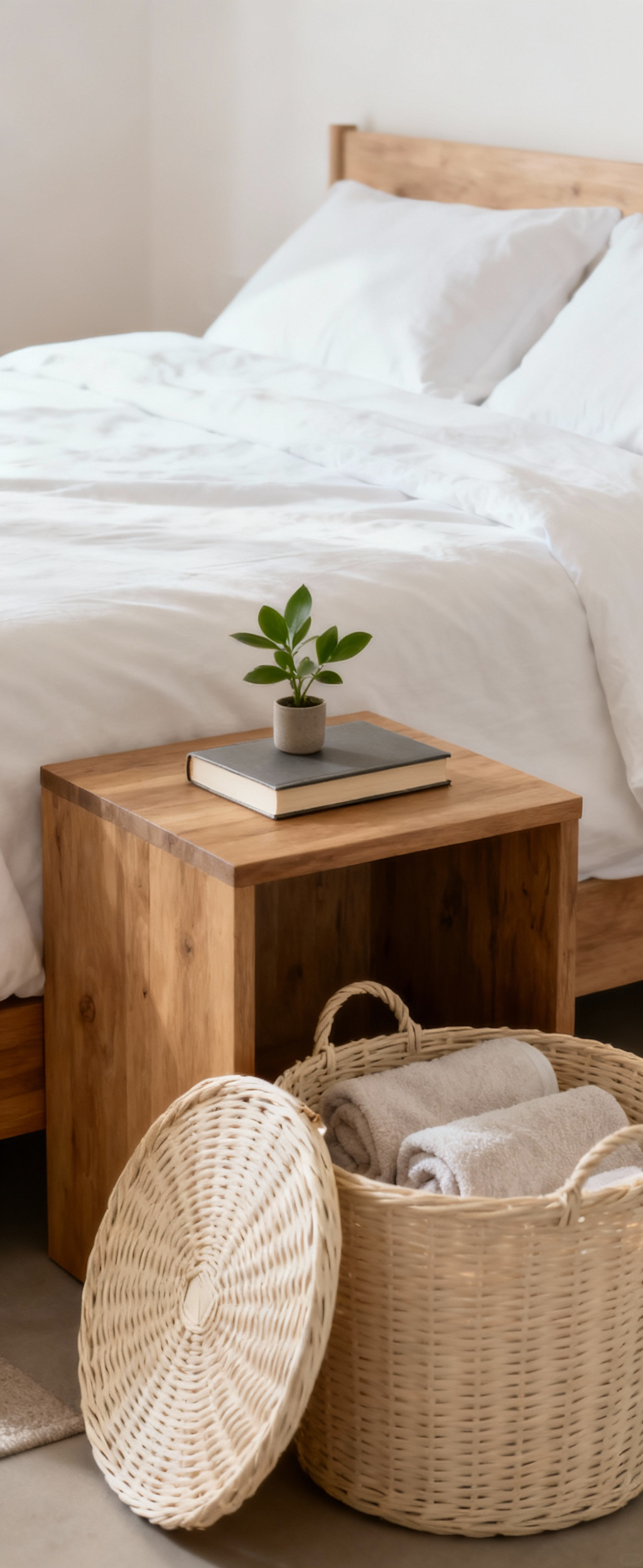
18. Implement Smart Home Automation for Environmental Control
This is where organization meets technology. Use smart home devices to create an environment that helps you stay organized. Program smart lighting to slowly brighten in the morning, making it easier to wake up and start your day on an orderly note, rather than fumbling in the dark. At night, have your lights automatically dim an hour before bed—a signal to wind down and complete your five-minute nightly tidy routine.
Advanced application involves environmental preservation. A smart sensor can monitor humidity in your closet, protecting leather and delicate fabrics from damage, which is a form of proactive organization. Schedule a robotic vacuum to run daily. This forces you to keep floors clear of clothes and clutter, acting as a powerful motivator. It’s about creating an intelligent environment that subtly reinforces good organizational habits.
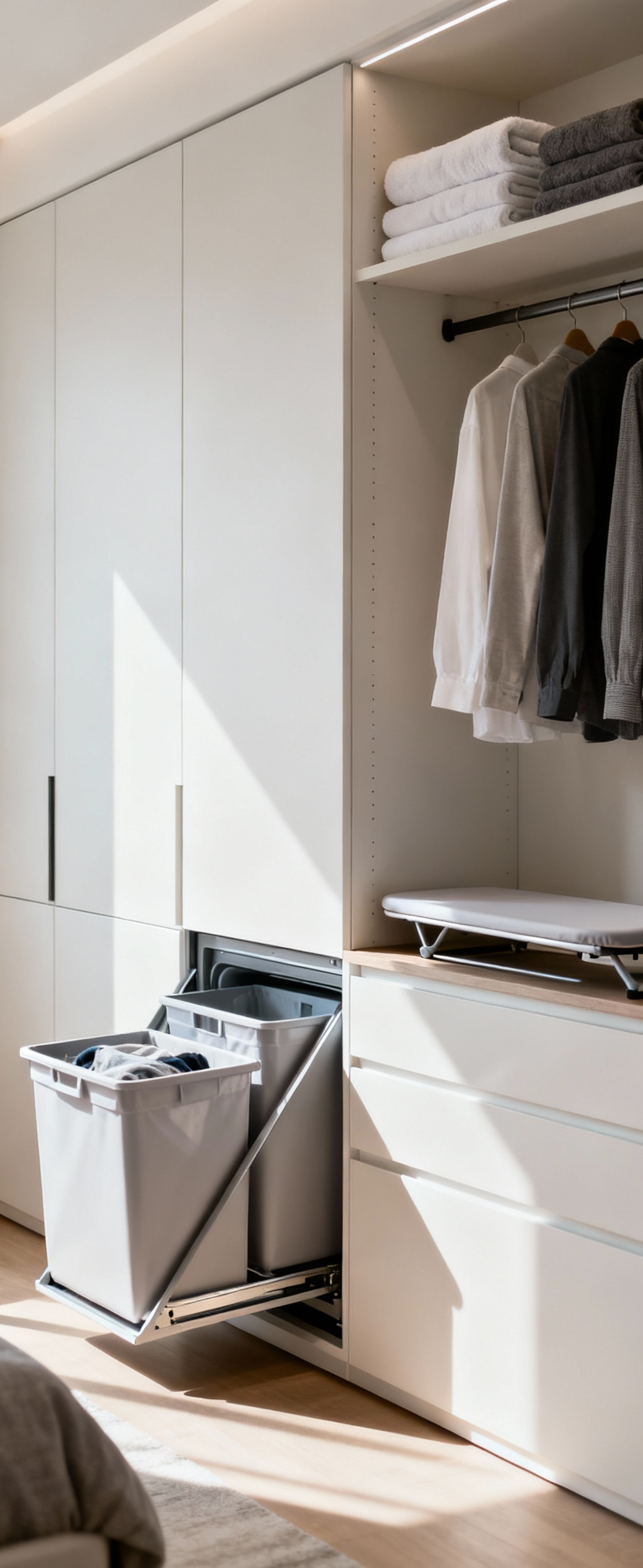
19. Cultivate a ‘Micro-Decluttering’ Mindset
The single most powerful habit for long-term organization is “micro-decluttering.” This is the opposite of a massive weekend purge. It’s the daily practice of editing your environment in small, almost unnoticeable ways. As you walk through your room, train your eye to spot things that are out of place, unneeded, or simply trash. See a tag on a new shirt? Cut it off and throw it away now, not later. Notice a book you’ve finished? Reshelve it as you walk by.
At first I thought this was just a form of constant cleaning, but then I realized it’s a mindset shift. You’re no longer letting small messes accumulate into big ones. You deal with entropy in real-time. This practice, compounded over weeks and months, requires almost zero effort but yields a perpetually organized space. It becomes an unconscious, reflexive habit for maintaining order.
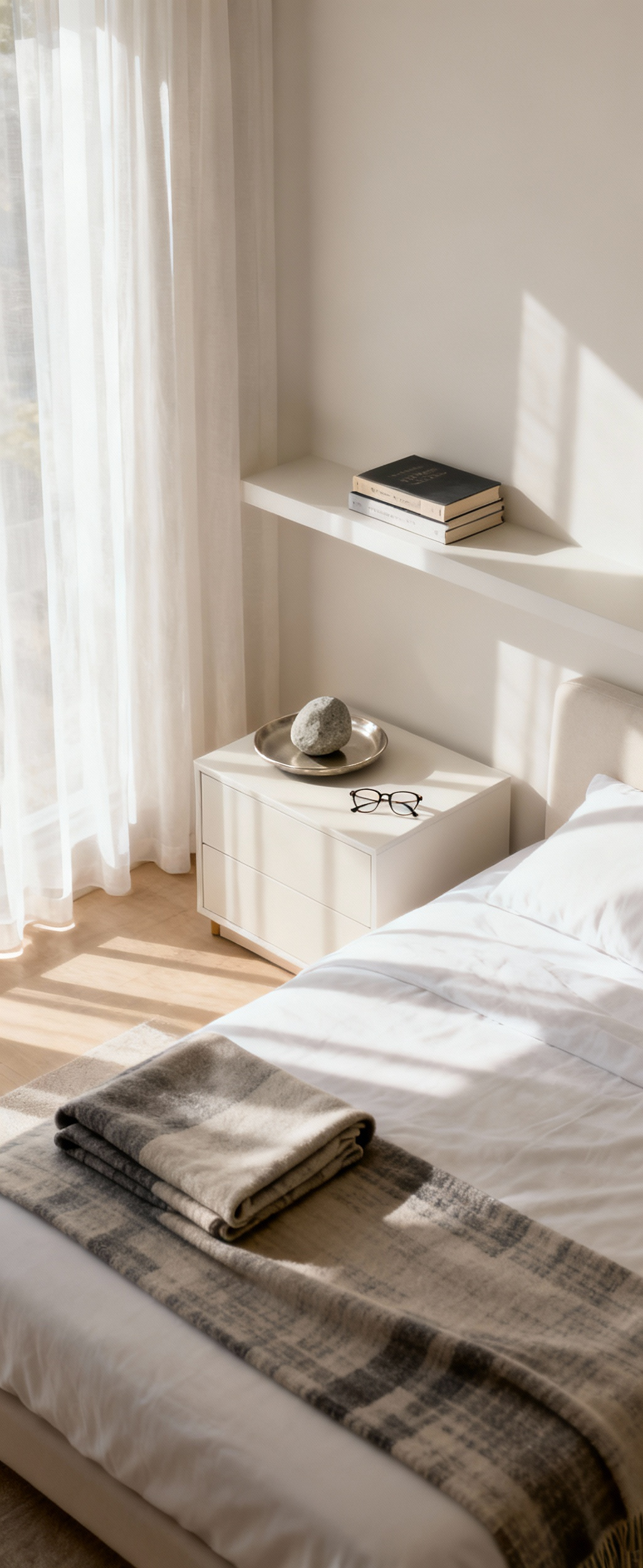
20. Develop a Personalized Maintenance Ritual
Finally, all these systems must be maintained. The key to success is a personalized, non-negotiable ritual. This isn’t a vague goal to “be tidier.” It’s a specific, scheduled routine. I recommend a “5-Minute Nightly Reset.” Before you get into bed, set a timer for five minutes and restore your bedroom to its ideal state: put away the clothes from the day, clear the nightstand, straighten the desk. That’s it.
Your ritual should be tailored to you. If your weak spot is paper clutter, your ritual must include sorting the mail. If it’s clothes, it must include using the hamper. After 15 years in this industry, I can tell you that the most organized people are not necessarily the most minimalist; they are the most consistent. A simple, repeatable ritual is the engine that drives a permanently organized life. It’s the ultimate mastery of your space.
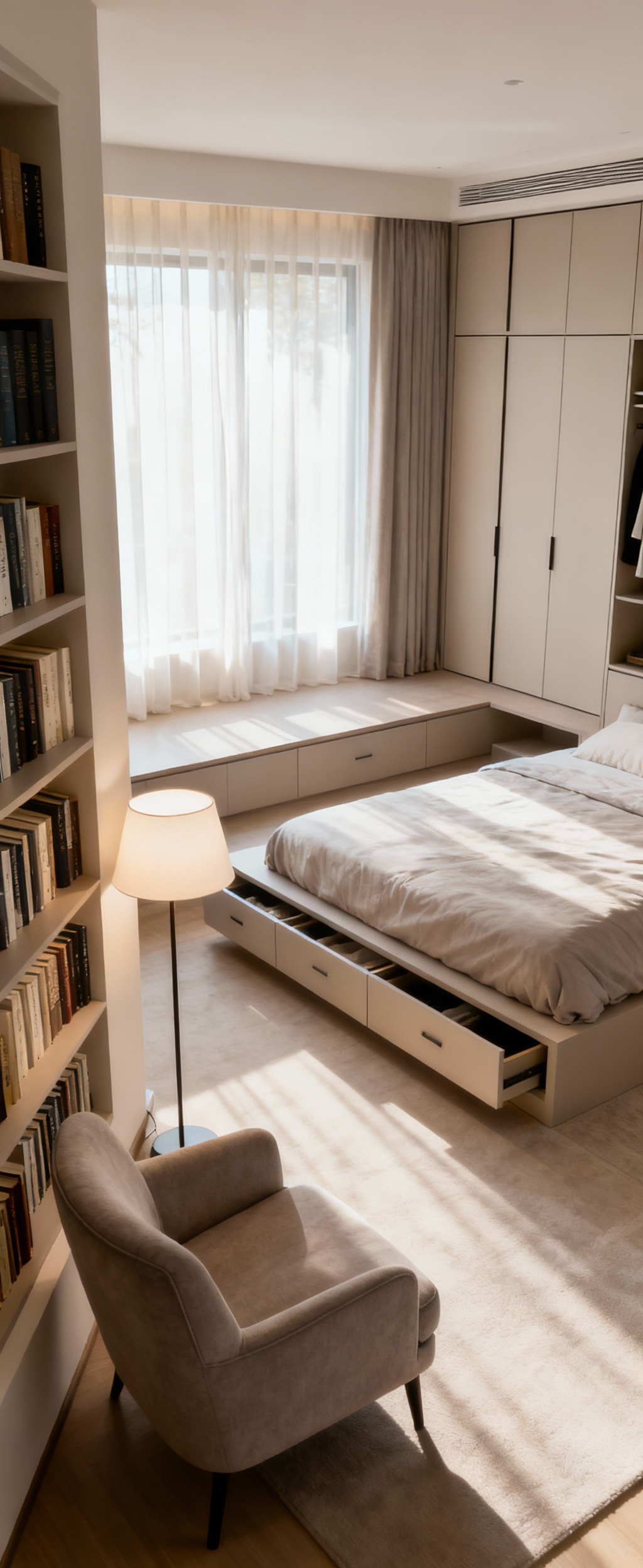
Conclusion
We have dissected 20 distinct strategies, moving from the immediate impact of clearing a nightstand to the advanced system of designing a maintenance ritual. The throughline is this: a truly organized bedroom is not an aesthetic preference, but a functional outcome of deliberate design. It is the result of applying systematic thinking to your most personal space. The principles of zoning, workflow engineering, and active curation are the same tools professionals use to design world-class interiors.
You now have the framework. You understand not just what to do, but why each step is a critical component of a larger system. The logic is sound, the steps are actionable. The ultimate goal is to create a bedroom that functions as a quiet, efficient, and restorative foundation for your life. By applying these bedroom organization ideas with the precision of a designer, you aren’t just cleaning your room—you are redesigning your environment to better serve you.
